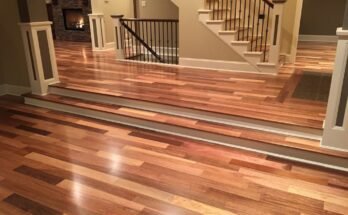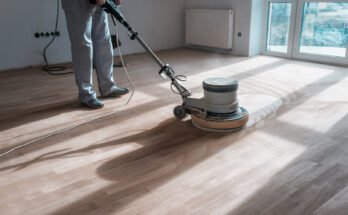Walking into a room with a polished floor can truly take your breath away. It’s the glossy finish that instantly elevates the look of any space, making it more elegant and clean. Floor polishing might seem like a straightforward task at first glance; however, it entails a variety of methods tailored to enhance different types of flooring.
In this comprehensive guide, let’s delve into the fascinating world of floor polishing, exploring techniques like grinding, buffing, and crystallisation. Each method has its own set of benefits and is suited for different floor materials, from classic hardwood to luxurious marble.
By understanding these Floor Polishing Geelong methods, you can choose the best way to bring a dazzling shine to your floors. Let’s dive in and discover how to make your floors the highlight of your home or office.
Understanding Floor Polishing Methods
The various techniques employed in floor polishing not only elevate the aesthetic of the flooring but are crucial in prolonging its durability and shine. There are several methods to polish floors, each suited to different types of flooring materials, such as marble, hardwood, or concrete. Today, we’ll dive deep into three prevalent floor polishing methods: the grinding technique, the buffing technique, and the crystallisation technique.
Grinding Technique
The grinding technique is a primary and intensive polishing method, often the starting point for bringing a high shine to rough surfaces. It involves using heavy machinery equipped with diamond-infused pads that aggressively grind down the floor’s surface. This method is particularly effective for concrete, marble, and granite floors, removing scratches, stains, or any form of unevenness. The process can be performed in several stages, starting with coarser grits and progressing to finer ones, to achieve the desired level of smoothness and shine.
Buffing Technique
Buffing, in contrast to grinding, is a less aggressive floor polishing method. It’s typically used as a finishing touch on floors that have already been ground or those that require light maintenance. Buffing machines or buffers are equipped with soft pads that swirl at high speeds to produce a glossy, sleek finish. This method works wonders on wood, vinyl, and linoleum floors, offering a quick way to rejuvenate the floor’s appearance without removing layers from its surface.
Crystallisation Technique
Crystallisation is a specialised method used primarily on calcite-based Flooring materials like marble and limestone. This technique involves a chemical reaction between the floor’s surface and a crystallisation fluid, which is applied using a steel wool pad under a buffing machine. The reaction creates a crystalline structure over the surface, enhancing the floor’s shine and adding a layer of protection. It not only improves the aesthetic of the floor but also its resistance to wear and tear, making it a popular choice for high-traffic areas.

Benefits of Each Floor Polishing Method
Each floor polishing Geelong method comes with its own set of advantages, tailored to address the needs of different flooring types and conditions. Let’s discuss the benefits of the grinding, buffing, and crystallisation techniques.
Grinding Method Benefits
Removes Deep Scratches and Stains: The grinding method effectively eliminates deep-set imperfections, offering a fresh base.
Evens Out the Floor Surface: It levels the floor by removing bumps, ensuring a smoother walk.
Prepares the Floor for Further Treatment: Grinding opens up the floor’s pores, making it more receptive to stains and dyes for a more vibrant finish.
Enhances Durability: By removing the weaker top layer, grinding can increase the floor’s longevity.
Buffing Method Benefits
Quick and Efficient: Buffing is fast and doesn’t require the area to be vacated for an extended period.
Enhances Floor Shine: It provides a high gloss finish that rejuvenates the floor’s appearance.
Cost-Effective Maintenance: Regular buffing helps maintain the floor’s aesthetic, reducing the need for more intensive treatments.
Less Abrasive: Unlike grinding, buffing is gentle and doesn’t strip the floor of its surface layer.
Crystallisation Method Benefits
Improved Shine and Protection: Crystallisation not only improves the gloss but also creates a protective layer, enhancing the floor’s resistance to traffic and spills.
Durability: It increases the floor’s durability, extending the life of marble and limestone surfaces.
Restorative Qualities: This method can help restore floors to their original shine, making them look brand new.
Eco-Friendly Option: Because it involves a chemical reaction rather than the physical removal of the surface, crystallisation can be considered a more sustainable option for maintaining floors.
In conclusion, understanding these floor polishing methods and their benefits allows homeowners and businesses to make informed decisions tailored to their specific flooring needs. Whether it’s the intensive grinding method, the quick and efficient buffing technique, or the protective crystallisation approach, each method plays a crucial role in maintaining and enhancing the beauty and longevity of floors.
Factors to Consider Before Choosing a Floor Polishing Method
Choosing the right floor polishing method is crucial to achieving the look and longevity you desire. While it might be tempting to pick a technique based on what seems most popular or easy, several critical factors should guide your decision. Let’s delve into the essentials to consider.
Type of Flooring
The type of flooring plays a pivotal role in determining the suitable polishing method. Different materials—be it marble, hardwood, or concrete—react differently to polishing processes. Hardwood floors might benefit from buffing and recoating, while marble floors often require grinding and crystallisation for that glossy finish. It’s essential to match the method with the material to avoid damage and ensure an optimal outcome.
Desired Finish
What finish are you aiming for? A mirror-like gloss, a soft sheen, or something in between? Your preference will directly influence the polishing method you choose. For instance, buffing can create a high gloss on hardwood and some types of stone floors. However, for concrete floors seeking an ultra-smooth and shiny finish, grinding followed by polishing might be necessary. Being clear on your aesthetic goals will help you narrow down the best technique.
Maintenance Requirements
Consider how much effort you’re willing to put into maintaining your floors post-polish. Some finishes might look stunning but require regular upkeep to maintain their shine. For example, crystallisation of marble floors offers a beautiful sheen but may need more frequent touch-ups compared to polished concrete, which typically demands less maintenance. Choose a method that aligns with your lifestyle and willingness to upkeep.
Comparison of Floor Polishing Methods
To further refine our understanding, let’s compare how the different polishing methods stack up against each other in terms of durability, cost-effectiveness, and time efficiency.
Durability
Durability is a primary concern for many when polishing floors. Hard-finished floors, such as those achieved through grinding and polishing concrete, tend to offer the longest-lasting results. These methods create a dense, hard surface resistant to scratches and stains, making it ideal for high-traffic areas. On the other hand, softer finishes, like those on some buffed hardwood floors, may require more regular maintenance to keep their appearance over time.
Cost-Effectiveness
The cost-effectiveness of a floor polishing method is not solely about the initial outlay but also factors in longevity and maintenance needs. Grinding and polishing concrete might seem expensive upfront but could be more cost-effective in the long run due to its durability and low maintenance. Buffing and recoating hardwood floors might have a lower initial cost but considering the potential for more frequent redo, the long-term costs could add up. It’s crucial to weigh the upfront cost against the expected lifespan and maintenance expenses of the finish.
Time Efficiency
Time efficiency is another critical factor when comparing Floor Polishing Methods. Some methods require numerous steps and significant drying or curing time, while others can be completed more swiftly. For example, grinding concrete is a time-intensive process, often needing several rounds to achieve the desired finish, plus additional time for any sealers or coatings to dry. Buffing, however, can be relatively quick, especially on floors like hardwood that respond well to this method. The choice here often balances between the quality of the finish desired and the time available for the project.
In conclusion, selecting the right floor polishing method requires careful consideration of the flooring type, desired finish, maintenance requirements, as well as a clear understanding of each method’s durability, cost, and time efficiency. By taking these factors into account, you can make an informed decision that ensures your floors look stunning and last for years to come.
Conclusion
In the world of floor maintenance, understanding the different polishing methods is key to achieving that lasting shine and prolonging the lifespan of your floors. Whether you choose grinding for its deep cleaning benefits, buffing for that glossy finish, or crystallisation for its protective layer, each method has its unique perks.
Grinding is your go-to for removing old coatings and preparing the floor for a fresh seal.
Buffing works wonders in bringing out that high-gloss finish, making your floors look as good as new.
Crystallisation, on the other hand, not only beautifies but also toughens your floors against wear and tear.
Choosing the right floor polishing Geelong method can seem daunting initially, but armed with the knowledge of each technique’s advantages, you’re well on your way to making an informed decision. Here’s to floors that don’t just look fantastic but are also conditioned to stand the test of time!




